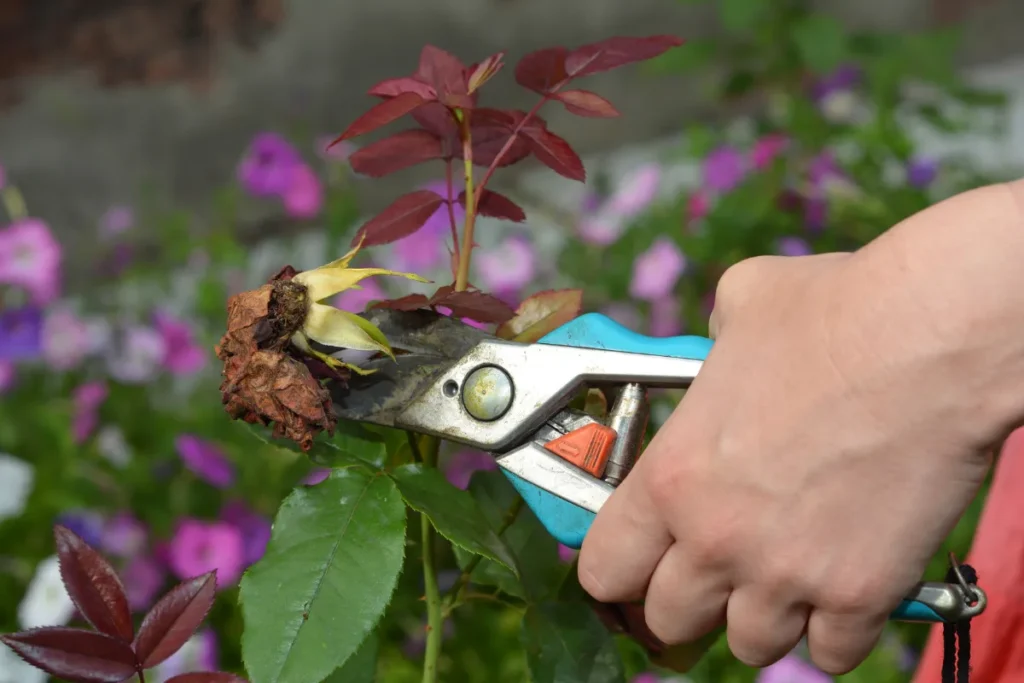Perennial flowers are the backbone of many gardens, offering seasonal blooms year after year with minimal maintenance.
However, to keep them thriving and looking their best, proper pruning and deadheading are essential tasks.
These practices not only enhance the appearance of your garden but also promote healthier growth and more prolific flowering.
Whether you’re a novice gardener or have years of experience, mastering the art of pruning and
deadheading perennials will elevate your gardening skills and ensure your plants flourish throughout the seasons.
Understanding Pruning and Deadheading

Pruning involves selectively cutting back parts of a plant to shape it, encourage new growth, remove dead or diseased material, or maintain its size.
Perennials benefit from pruning to maintain their shape, rejuvenate growth, and prevent them from becoming overly leggy or dense.
Deadheading, on the other hand, refers to the removal of spent flowers from the plant.
The primary goal of deadheading is to promote continuous blooming, prevent the plant from setting seeds
(which can divert energy away from flower production), and improve the overall appearance of the plant.
Tools You’ll Need
Before you start pruning and deadheading, gather the necessary tools:
Pruning Shears: Essential for cutting thicker stems and branches.
Hand Pruners: Ideal for smaller stems and delicate flowers.
Sterilizing Solution: To disinfect your tools between plants, preventing the spread of diseases.
Gloves: Protect your hands from thorns, sap, and potential allergens.
When to Prune and Deadhead
Timing is crucial when it comes to pruning and deadheading perennials:
Spring: Early spring is the best time to prune many perennials before new growth begins.
This includes cutting back dead foliage from the previous season and trimming back any damaged or crossing branches.
Throughout the Growing Season: Deadhead spent flowers regularly throughout the growing season to encourage continuous blooming.
This is particularly important for perennials that produce abundant flowers but may stop blooming if not deadheaded.
Fall: As the growing season winds down, some perennials benefit from a light pruning or deadheading to tidy up their appearance before winter.
However, avoid heavy pruning in fall, as it can stimulate new growth that may be damaged by frost.
How to Prune Perennial Flowers
Identify Dead or Damaged Growth: Start by inspecting the plant for any dead, diseased, or damaged stems. These should be pruned back to healthy tissue using clean, sharp pruners.
Cutting Techniques:
Shearing: Use shears to cut back the entire plant if it has finished flowering and needs rejuvenation. This technique is useful for plants like lavender or sage.
Pinching: Pinch off the tips of stems between your thumb and forefinger to encourage bushier growth. This is effective for plants like asters or mums.
Selective Pruning: Cut individual stems just above a leaf node or set of healthy buds to encourage new growth and maintain the plant’s shape.
Consider Plant-Specific Needs: Some perennials have specific pruning requirements. For instance, ornamental grasses are often cut back close to the ground in late winter to early spring to promote fresh growth.
How to Deadhead Perennial Flowers
Identify Spent Flowers: Look for flowers that have faded or are beginning to wilt.
Cutting Technique:
Single Stem: Trim the stem just above a healthy set of leaves or buds to encourage new growth.
Clustered Flowers: For plants with clustered flowers like coneflowers, cut the entire spent flower cluster back to where it meets the main stem or a lateral bud.
Regular Maintenance: Deadhead every few days or weekly during the peak flowering season to keep plants looking tidy and promote prolonged blooming.
Tips for Success
Regular Inspections: Check your perennials weekly during the growing season to catch spent flowers early and assess the need for pruning.
Know Your Plants: Research the specific needs of each perennial in your garden. Some may require minimal pruning, while others benefit from more aggressive trimming.
Be Gentle: Avoid over-pruning, as some perennials, especially those that bloom later in the season, may benefit from leaving spent flowers intact to set seeds for the next year.
Conclusion
Pruning and deadheading are fundamental skills every gardener should master to ensure their perennial flowers thrive and provide beautiful blooms year after year.
By understanding the timing, techniques, and specific needs of your plants, you can enhance their health, appearance, and overall garden aesthetic.
With practice and attention to detail, pruning and deadheading will become satisfying tasks that contribute to the success of your garden and your enjoyment of its beauty throughout the seasons.